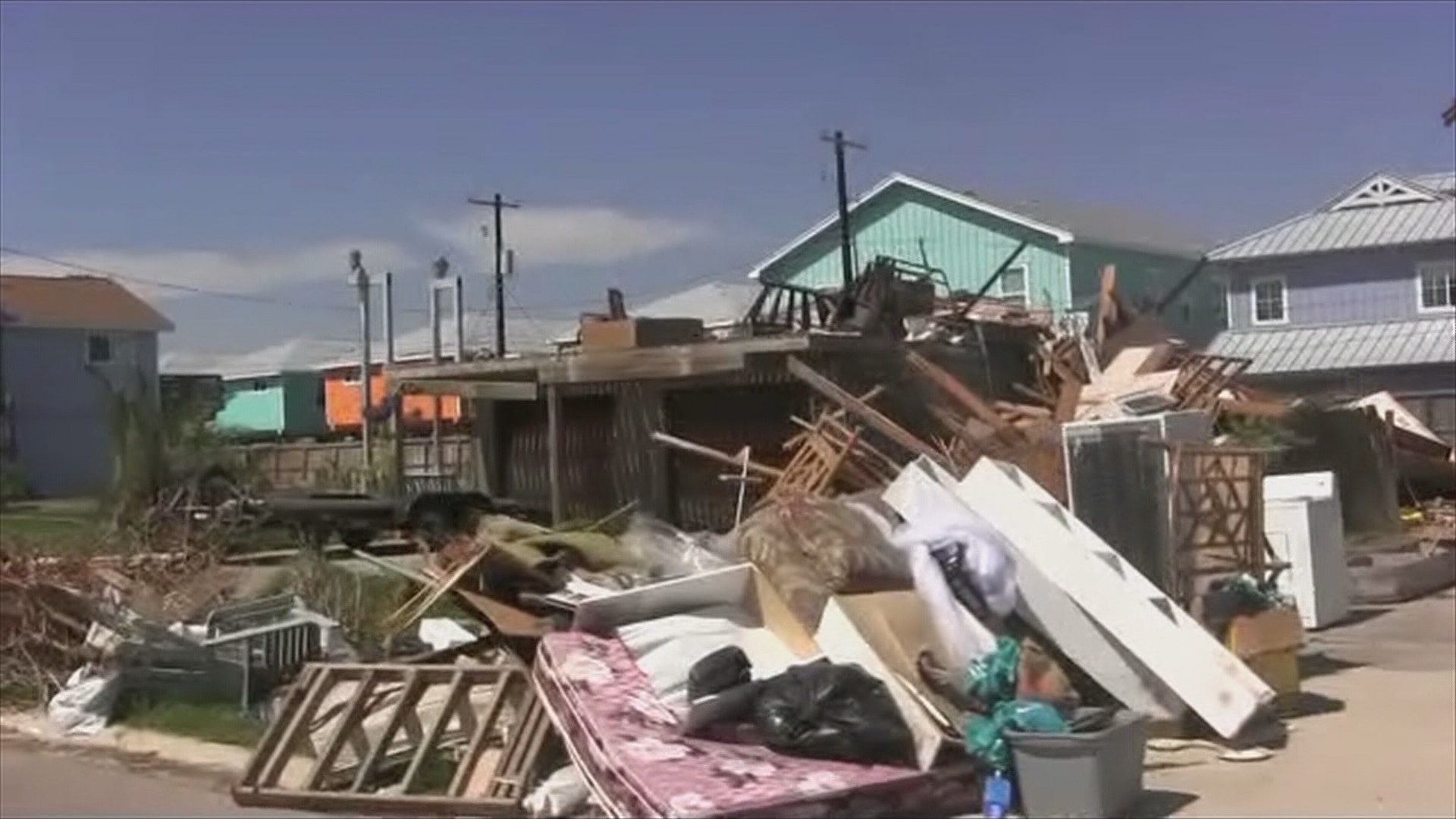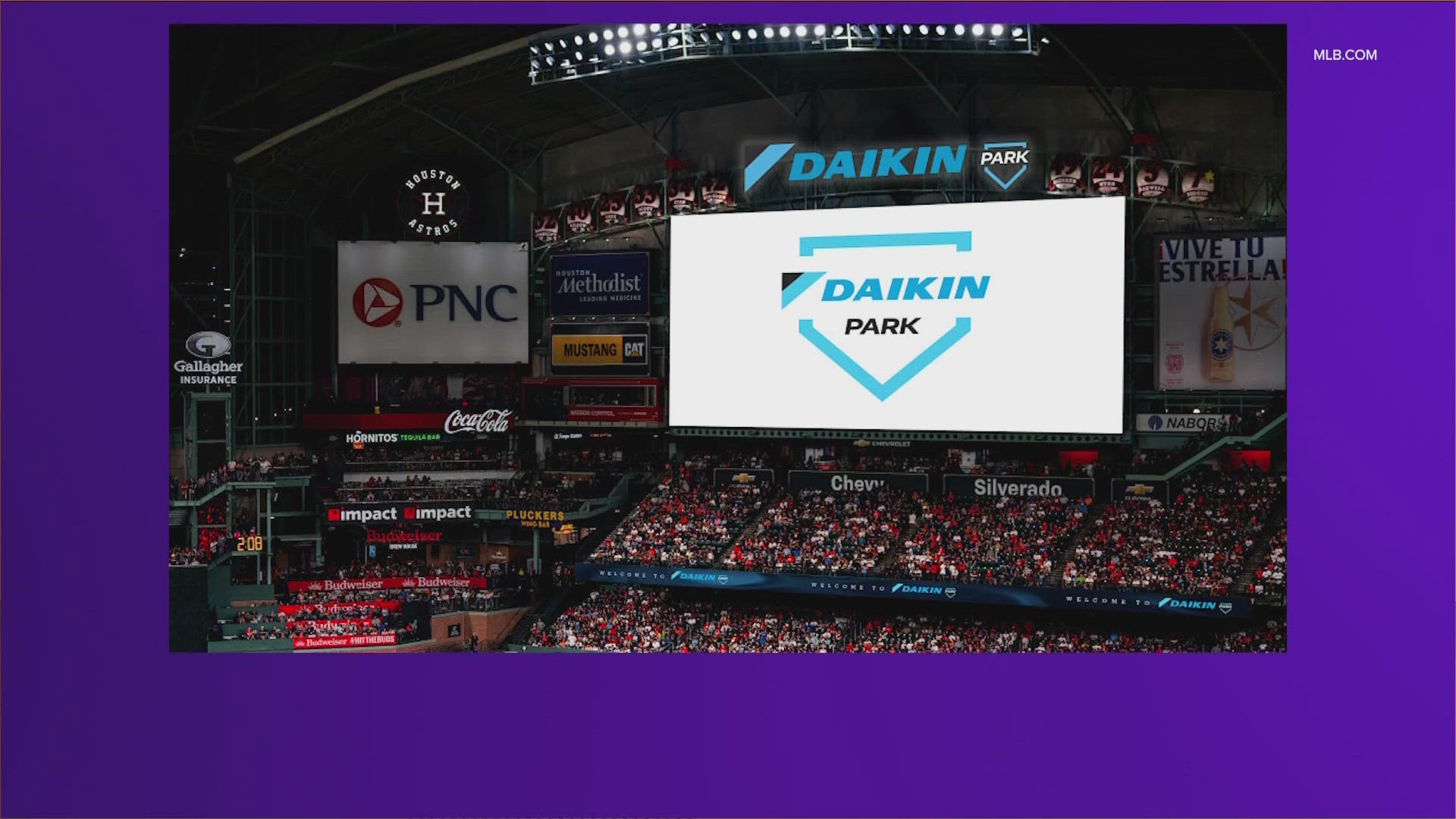PORT ARANSAS, Texas (AP) – Born and raised in this Texas Gulf Coast beach town, James Wheeler Jr. finds himself sawing plywood and hanging sheet rock at a time when he would normally be leading deep-sea fishing excursions, trying to hook tuna or Spanish mackerel by the cooler-full.
Since Hurricane Harvey came through Port Aransas just before Labor Day — damaging or destroying 80 percent of homes and business and wiping out the lucrative summer season's final weeks — the 38-year-old boat captain has become an amateur builder, working to repair the roof of a sea headquarters building where he and others dock their pleasure crafts.
"Port Aransas is built on the tourist dollar," said Wheeler, ticking off attractions besides fishing: surfing, nature reserves, seafood restaurants and beaches where it's always cocktail hour. "That dollar's not coming right now."
In many Texas seaside enclaves, the owners of bars and eateries, inns and T-shirt shops are facing a painful paradox: Tourists who are their economic lifeblood likely won't return until the rebuild is in full swing, but picking up the pieces after Harvey may not truly begin without the profits tourists bring.
"That's the risk," said David Teel, president of the Texas Travel Industry Association. "The recovery will come. But it will never be fast enough for these folks."
Insurance money and support from federal grants will help residents rebuild homes and businesses, and in some cases even cover businesses' lost income and employees' lost wages. But that will pale in comparison to what tourists would normally be spending, likely helping ensure that recovery moves more slowly.
Locals expect the normally busy Thanksgiving, Christmas and New Year's holidays to be slow. Even the possibility of getting back to business by spring break looks bleak.
Visitors to Texas' Gulf Coast spent $18.7 billion last year, according to state estimates, and the region's tourism industry employed 170,000-plus people. Visitors spent $221 million in 2016 just in Port Aransas, a onetime fishing village that's now home to around 4,000 full-time residents.
In other years, October is when "Winter Texans" — part-time residents from colder locales — take up temporary residence, while shorter-term tourists come for the weekends. The influx of people is normally enough to keep the economy robust through the holidays and until spring.
Wheeler says he'd usually be organizing large fishing trips nearly every day, but now takes just one smaller excursion a week.
"It's not that no one wants to come," Wheeler said. "There's just nowhere for them to stay yet."
Drivers entering Port Aransas encounter bulldozers tearing into a roadside mountain of debris more than three-stories high. Power company and internet provider vans are everywhere, as crews repair infrastructure. Golf carts — a favored mode of local transportation — have to avoid shattered glass and mangled light poles. They're more likely, these days, to be filled with Salvation Army personnel or construction crews than tourists hitting the beach.
"We are Port A Proud and on the Rebound," proclaims the website of the chamber of commerce, whose office was damaged. It lists six local hotels planning to be open by Christmas.
Sweeping dust out of the gutted Destination Beach and Surf store, Olya Soya said some regular visitors have come as volunteers helping to rebuild, while others simply gawk at Harvey's wrath.
"They want to see what it looks like now. It's very different," said Soya, 24, who instead of working in the air-conditioned store sweats through her days on a makeshift debris removal crew. Beside her is a towering plaster shark that survived the storm despite extensive damage to the store it guarded.
Harvey's eye passed directly over nearby Rockport, where operators hope to have 500 hotel rooms available by November — down from 1,500 pre-Harvey.
"Yes, we're open for business. But please be patient," said Diane Probst, president of the local chamber of commerce, adding that visitors should expect frustratingly slow debris removal.
Back in Port Aransas, dozens of restaurants and businesses have reopened, at least part time. One shop, Gratitude, suffered only light damage, despite being crammed with fragile keepsakes and knickknacks such as wind chimes and oversized wine glasses proclaiming "Summer is for mimosas and mermaids."
"You almost feel guilty opening because there are a lot of stores and places that can't," said owner Sally Marco, 60. "But it's nice to have people smile when they come in."
One bright spot is that area beaches didn't suffer major ill-effects. On a recent, balmy Saturday, seagulls and pelicans outnumbered the few surfers, children splashing in the waves and couples strolling on the sand with dogs.
"As these communities begin to open back up — and little pieces will open — the good part about it is, they've got a beach," said Teel, of the state tourist association. "And it's a great beach."


